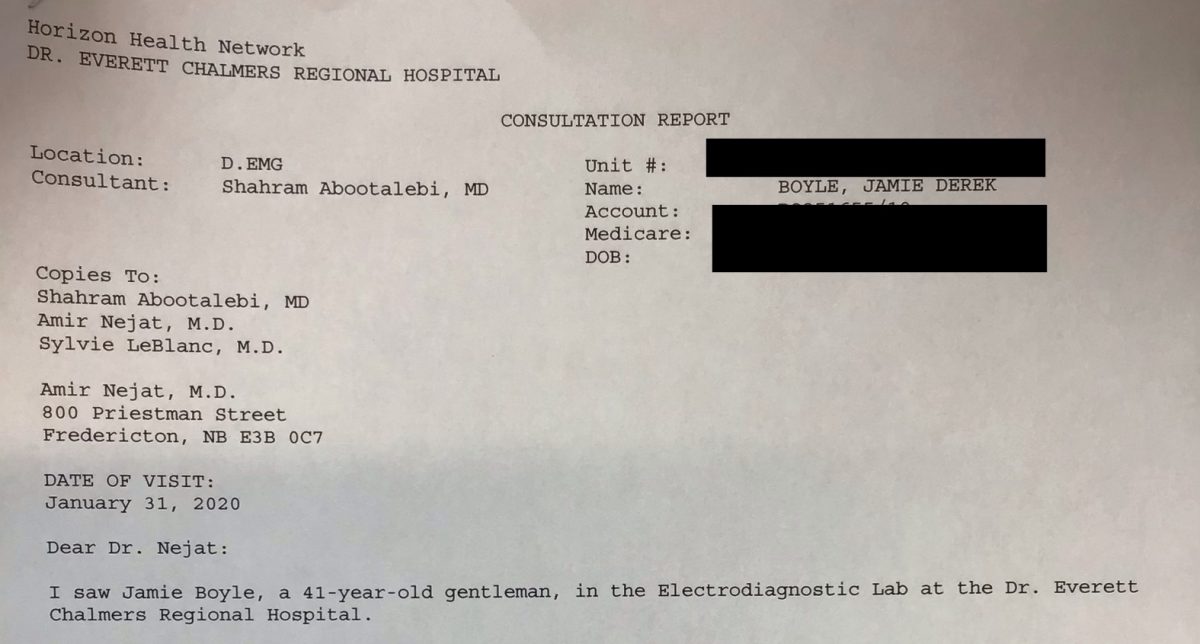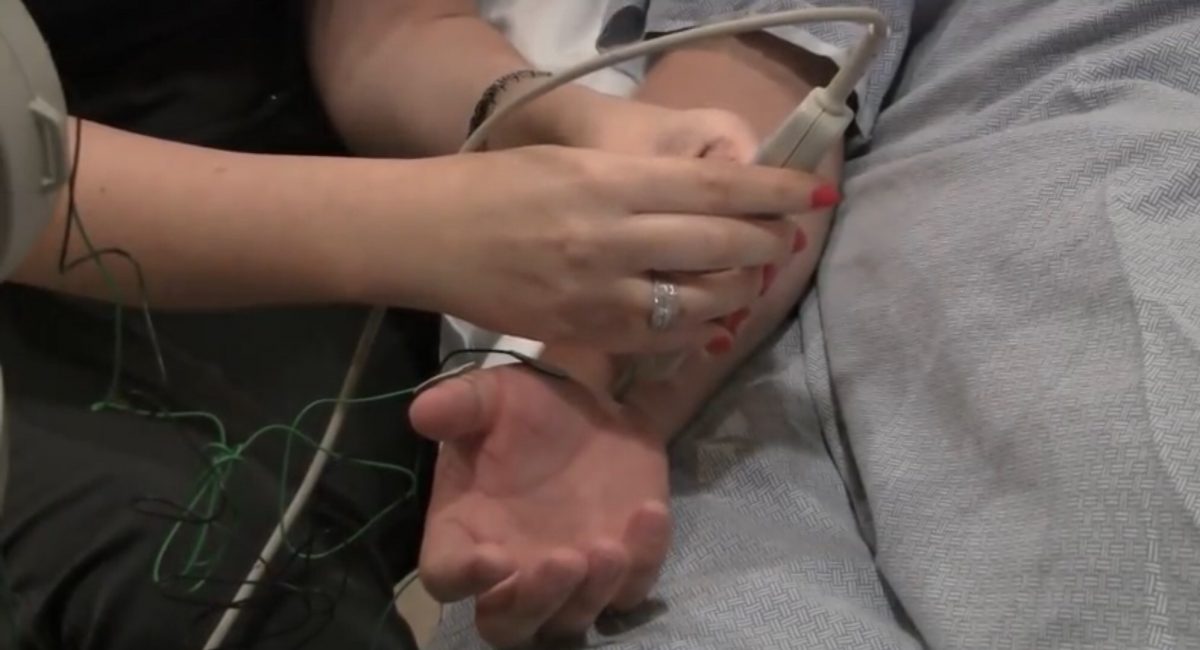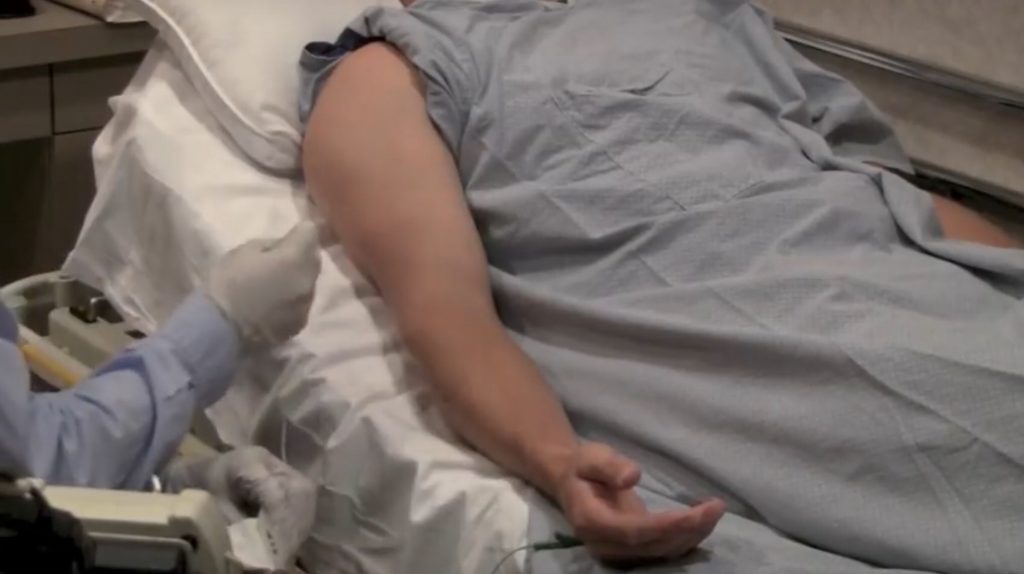Electromyography EMG Test & Nerve Conduction Study Results #2 Jamie Boyle Guillain Barre Syndrome
I saw Jamie Boyle, a 41 year old gentleman, in the Electrodiagnostic Lab at the Dr. Everett Chalmers Regional Hospital on October 23, 2019 for an Electromyography EMG test & nerve conduction study and again today January 31st, 2020. As you know, he had progressive rapid muscle weakness in his extremities which started on August 2nd, 2019. He reported having an episode of gastroenteritis with acute diarrhea which lasted a week before his muscle weakness. He was admitted to the Dr. Georges Dumont Hospital and since the muscle weakness rapidly progressed, he was intubated and transferred to the ICU. He was on mechanical ventilation on August 3rd, 2019. Guillain Barre Syndrome was diagnosed by a neurologist and he received IVIG to treat this condition. Subsequently, he did develop a few nosocomial complications such as urosepsis, ileus, acute renal failure, pneumonia, bronchitis and tracheitis. He was eventually transferred to The Stan Cassidy Rehabilitation Centre for rehabilitation. He received two more IVIG courses.
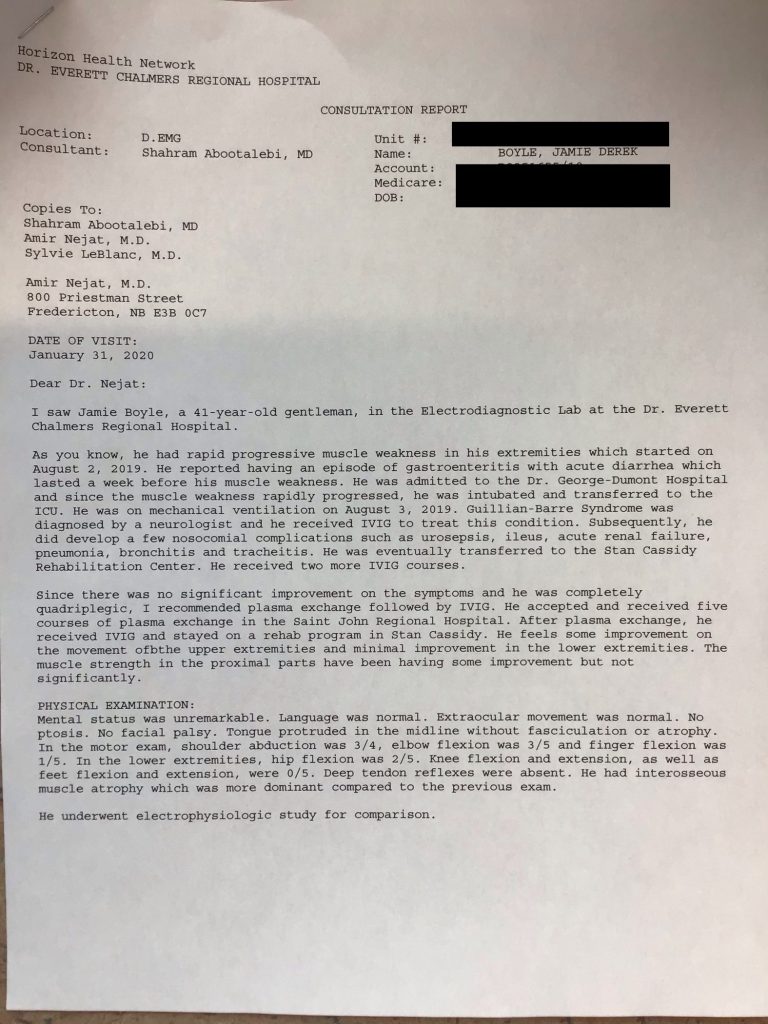
Since there was no significant improvement on the symptoms and he was completely quadriplegic, I recommend plasma exchange followed by IVIG. He accepted and received five courses of plasma exchange in the Saint John Regional Hospital. After plasma exchange, he received IVIG and stayed on a rehab program in Stan Cassidy. He feels some improvement on the movement of the upper extremities and minimal improvement in the lower extremities. The muscle strength in the proximal parts have been having some improvement but not significantly.
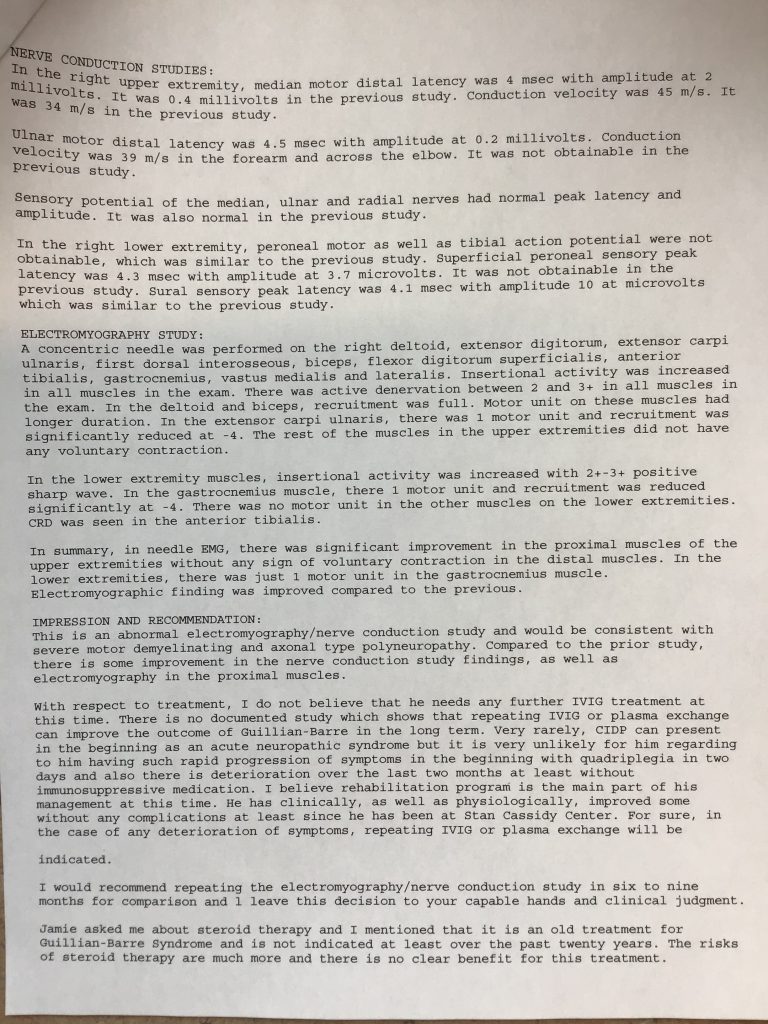
PHYSICAL EXAMINATION
Mental status was unremarkable. Language was normal. Extraocular movement was normal. No ptosis. No facial palsy. Tongue protruded in the midline without fasciculation or atrophy. In the motor exam, shoulder abduction was 3/4, elbow flexion was 3/5, and finger flexion was 1/5. In the lower extremities, hip flexion was 2/5. Knee flexion and extension, as well as feet flexion and extension, were 0/5. Deep tendon reflexes were absent. He had interosseous muscle atrophy which was more dominant compared to the previous exam.
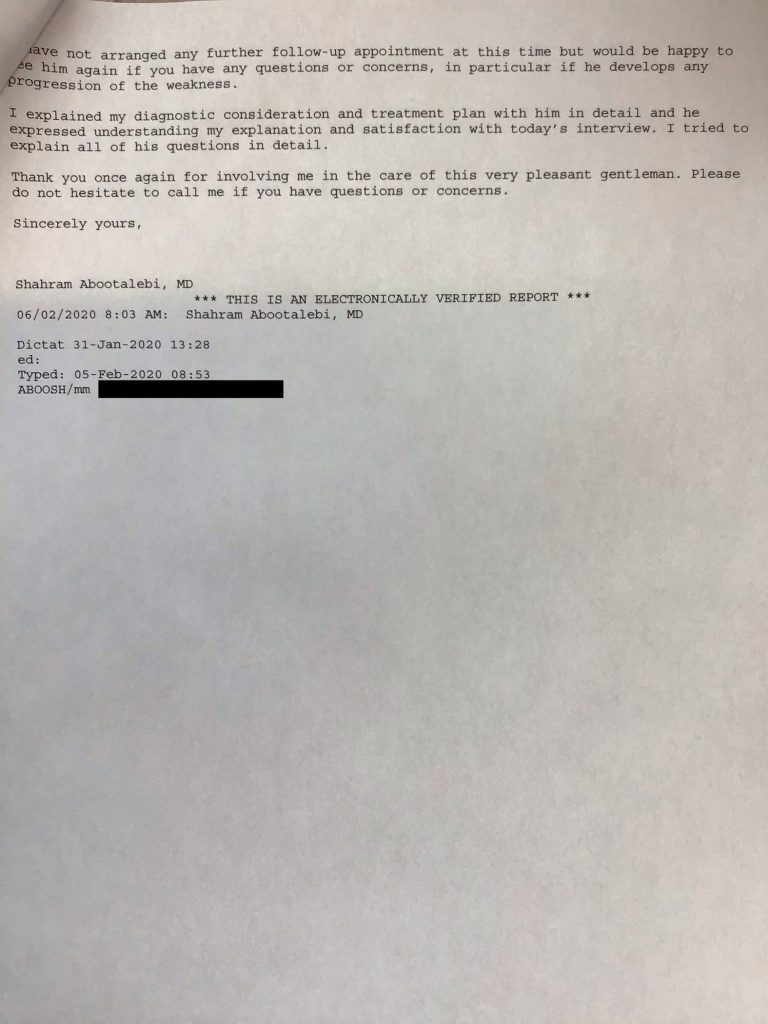
He underwent electrophysiologic study for comparison to Electromyography EMG test & nerve conduction study results for Jamie Boyle on October 23, 2019.
NERVE CONDUCTION STUDIES:
In the right upper extremity, median motor distal latency was 4 msec with amplitude at 2 millivolts. It was o.4 millivolts in the previous study. Conduction velocity was 45 m/s. It was 34 m/s in the previous study.
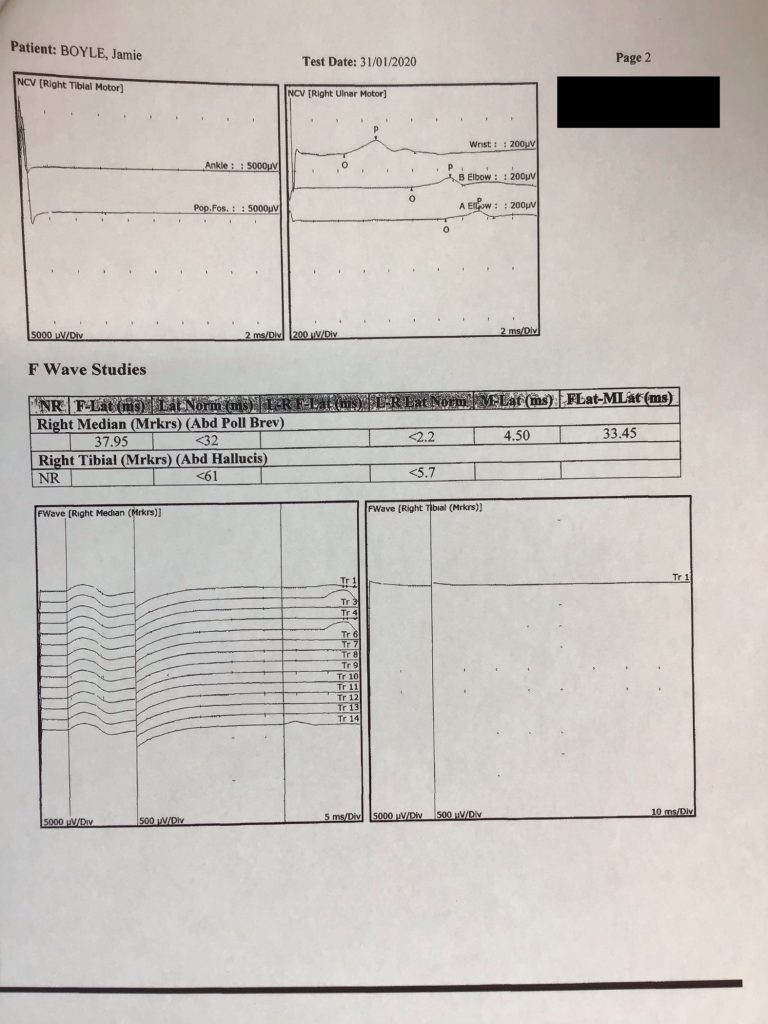
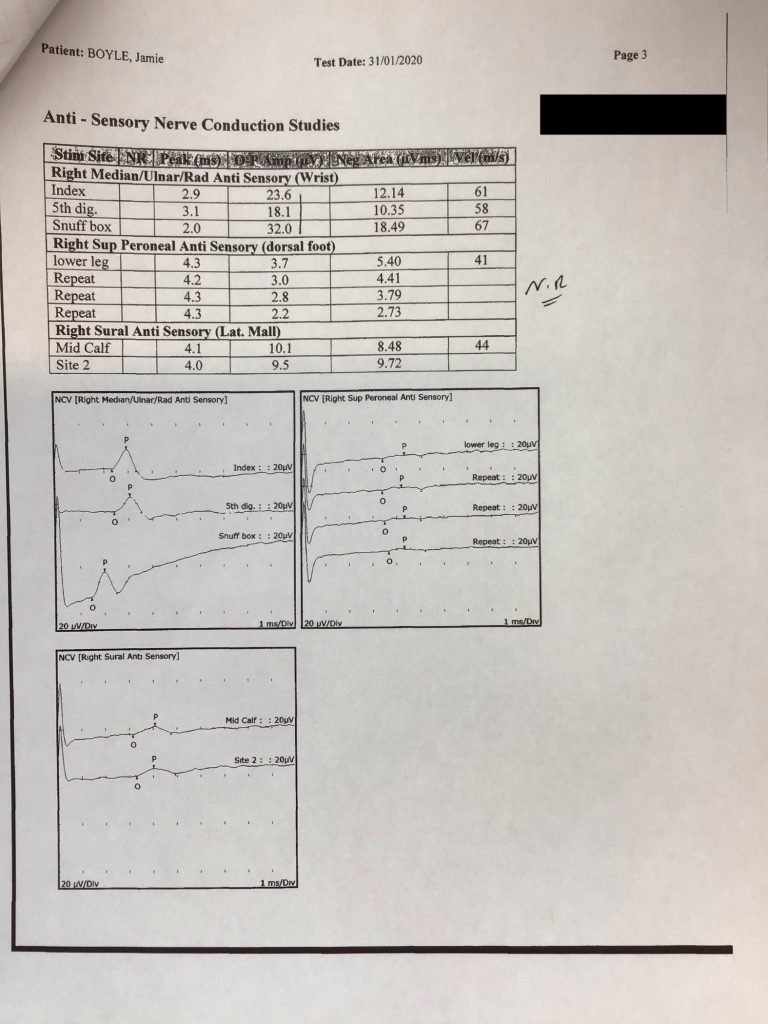
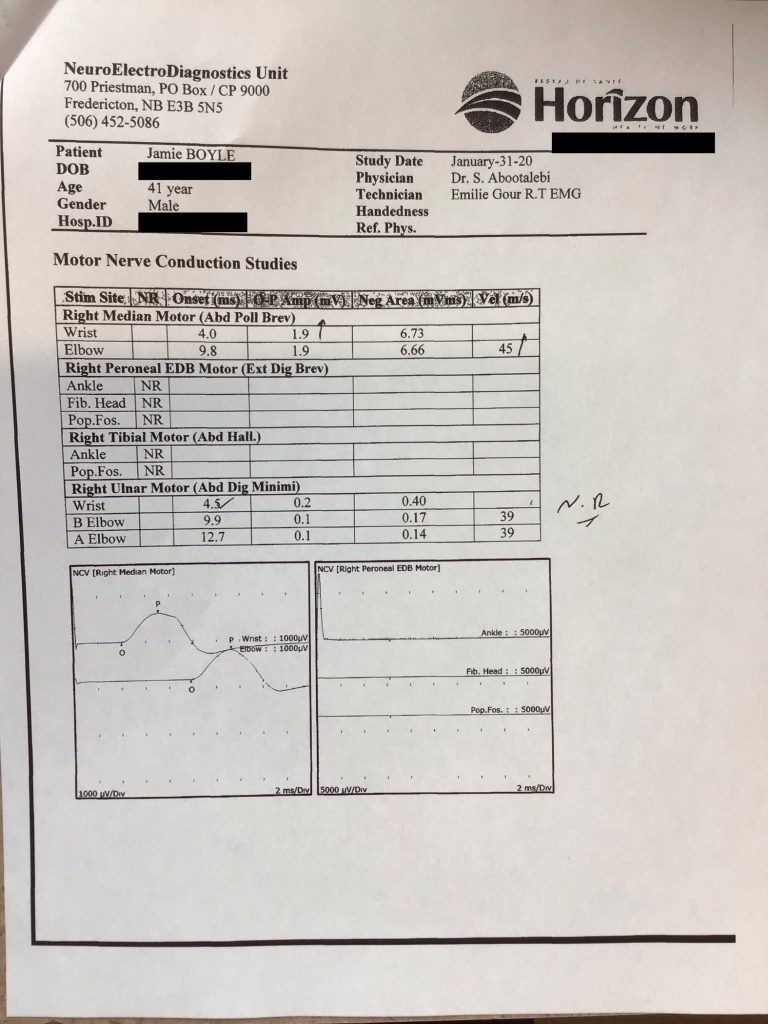
Ulnar motor distal latency was 4.5 msec with amplitude at o.2 millivolts. Conduction velocity was 39 m/s in the forearm and across the elbow. It was not obtainable in the previous study.
Sensory potential of the median, ulnar and radial nerves had normal peak latency and amplitude. It was also normal in the previous study.
In the right lower extremity, peroneal motor as well as tibial action were not obtainable, which was similar to the previous study. Superficial peroneal sensory latency was 4.3 msec with amplitude at 3.7 microvolts. It was not obtainable in the previous study.
Sural sensory peak latency was 4.1 msec with amplitude at 10 microvolts which was similar to the previous study.
Electromyography EMG Test STUDIES:
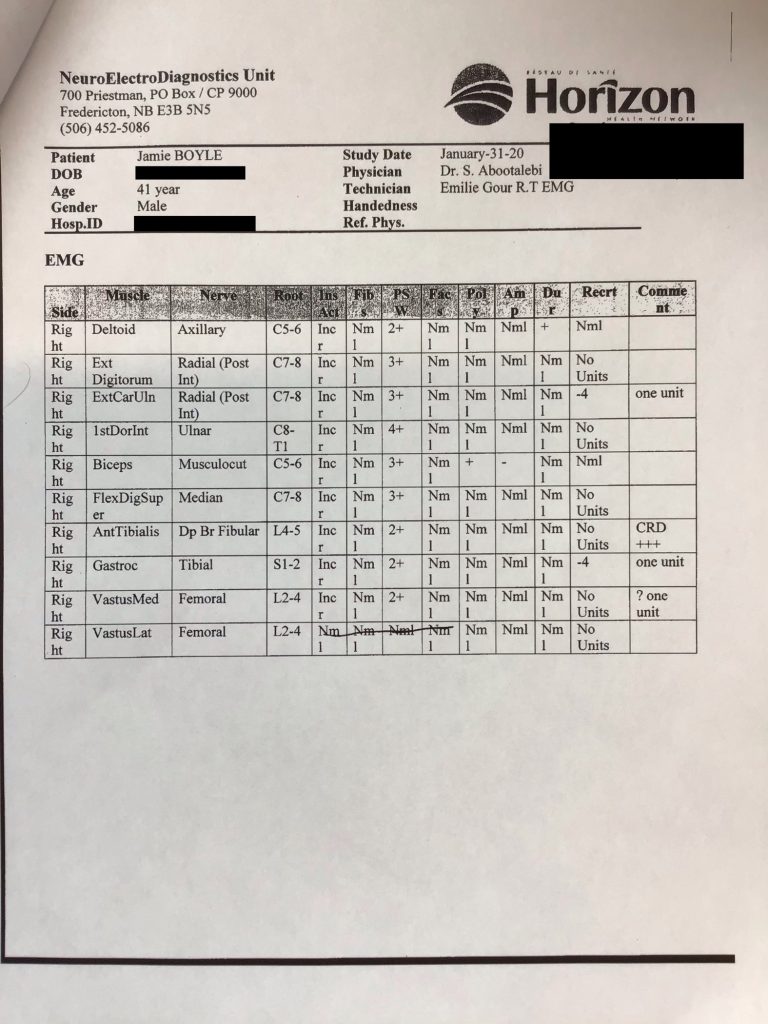
A concentric needle EMG was performed on the right deltoid, extensor digitorum, extensor carpi ulnaris, first dorsal interosseous, biceps, flexor digitorum superficialis, anterior tibialis, gastrocnemius, vastus medialis, and lateralis. Insertion activity was increased in all the muscles in the exam. There active denervation between 2 and 3+ in all muscles in the exam. In the deltoid and biceps, recruitment was full. Motor unit on these muscles had longer duration. In the extensor carpi ulnaris, there was 1 motor unit, and recruitment was significantly reduced at -4. The rest of the muscles in the upper extremities did not have any voluntary contractions.
In the lower extremity muscles, insertional activity was increased with 2+-3+ positive sharp wave. In the gastrocnemius muscle, there 1 motor unit and recruitment was reduced significantly at -4. There was no motor unit in the other muscles on the lower extremities. CRD was seen in the anterior tibialis.
In summary, in needle EMG, there was significant improvement in the proximal muscles of the upper extremities without any sign of voluntary contraction in the distal muscles. In the lower extremities, there was just 1 motor unit in the gastrocnemius muscle.
Electromyographic findings were improved compared to previous.
IMPRESSION AND RECOMMENDATION:
This is an abnormal Electromyography/nerve conduction study and would be consistent with severe motor demyelinating and axonal type polyneuropathy. Compared to the prior study, there is some improvement in the nerve conduction study findings, as well as electromyography in the proximal muscles.
With respect to treatment, I do not believe he needs any further IVIG treatments at this time. There is no documented study which shows that repeating IVIG or plasma exchange can improve the outcome of Guillain Barre in the long term. Very rarely, CIDP can present in the beginning as an acute neuropathic syndrome but it is very unlikely for him regarding to him having such rapid progression of symptoms in the beginning with quadriplegia in two days and also there is deterioration over the last two months at least without immunosuppressive medications. I believe rehabilitation program is the main part of his management at this time. He has clinically, as well physiologically, improved some without any complications at least since he has been at Stan Cassidy Centre. For sure, in the case of any deterioration of symptoms, repeating IVIG or plasma exchange will be indicated.
I would recommend repeating the electromyography/nerve conduction study in six to nine months for comparison and I leave this decision to your capable hands and clinical judgement.
Jamie asked me about steroid therapy and I mentioned that it is an old treatment for Guillain Barre Syndrome and is not indicated at least over the past twenty years. The risks of steroid therapy are much more and there is no clear benefit for this treatment.
I have not arranged any further follow-up appointment at this time but would be happy to see him again if you have any questions or concerns, in particular if he develops any progression of the weakness.
I explained my diagnostic consideration and treatment plan with him in detail and he expressed understanding my explanation and satisfaction with today’s interview. I tried to explain all of his questions in detail.
Thank you once again for involving me in the care of this very pleasant gentleman. Please do not hesitate to call me if you have any questions or concerns.
Sincerely yours,
Shahram Abootalebi, MD Neurologist
